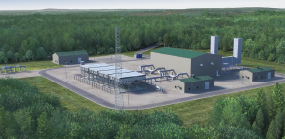Background
The widely recognized 2014 INGAA Foundation infrastructure study projected significant infrastructure development, driven by robust market growth and continued development of North American unconventional natural gas and crude oil supplies. Market conditions have changed dramatically since completion of that study, warranting an updated analysis of infrastructure development. This new INGAA Foundation study has been undertaken with recent market changes in mind, and like past studies, is focused on estimating future natural gas, natural gas liquids (NGL), and oil midstream requirements and the potential capital expenditures associated with that development. This study specifically analyzes the potential impacts of reduced commodity (i.e., oil and gas) prices and factors in uncertainty about the economic outlook.
Like past studies, this study informs industry, policymakers and stakeholders about the ongoing dynamics of North America’s energy markets and the infrastructure needed to ensure that consumers benefit from the abundance of natural gas, crude oil and NGLs spread across the United States and Canada. As with previous studies, impacts of midstream infrastructure investments on jobs and the economy are evaluated, providing guidance to policymakers as they seek to promote job growth and economic development, protect the environment, increase energy security and reduce the trade deficit.
In the context of this analysis, midstream infrastructure includes:
- Natural gas gathering and lease equipment, processing, pipeline transportation and storage, and LNG export facilities.
- NGL pipeline transportation, fractionation and export facilities.
- Crude oil gathering and lease equipment, pipeline transportation and storage facilities.
Scenario Trends
Significant questions affecting midstream infrastructure development have been created by sustained low oil and natural gas prices, an uncertain global and domestic economic outlook, and the pace at which public policy will affect energy markets. Hence, this study considers two distinct scenarios – a High Case and a Low Case – each reflecting very different pathways for supply growth and market development:
- The High Case is best characterized as a plausibly optimistic case for midstream infrastructure development. The case assumes a rebound in global economic activity that spurs increased use of natural gas and oil over time and fosters a more robust pricing environment for oil and gas supply development.
- The Low Case is best characterized as a less-optimistic case, in which a slower economic recovery reduces the need for oil and gas development. The case assumes more robust penetration of energy efficiency and non-gas resources to support future power generation.



